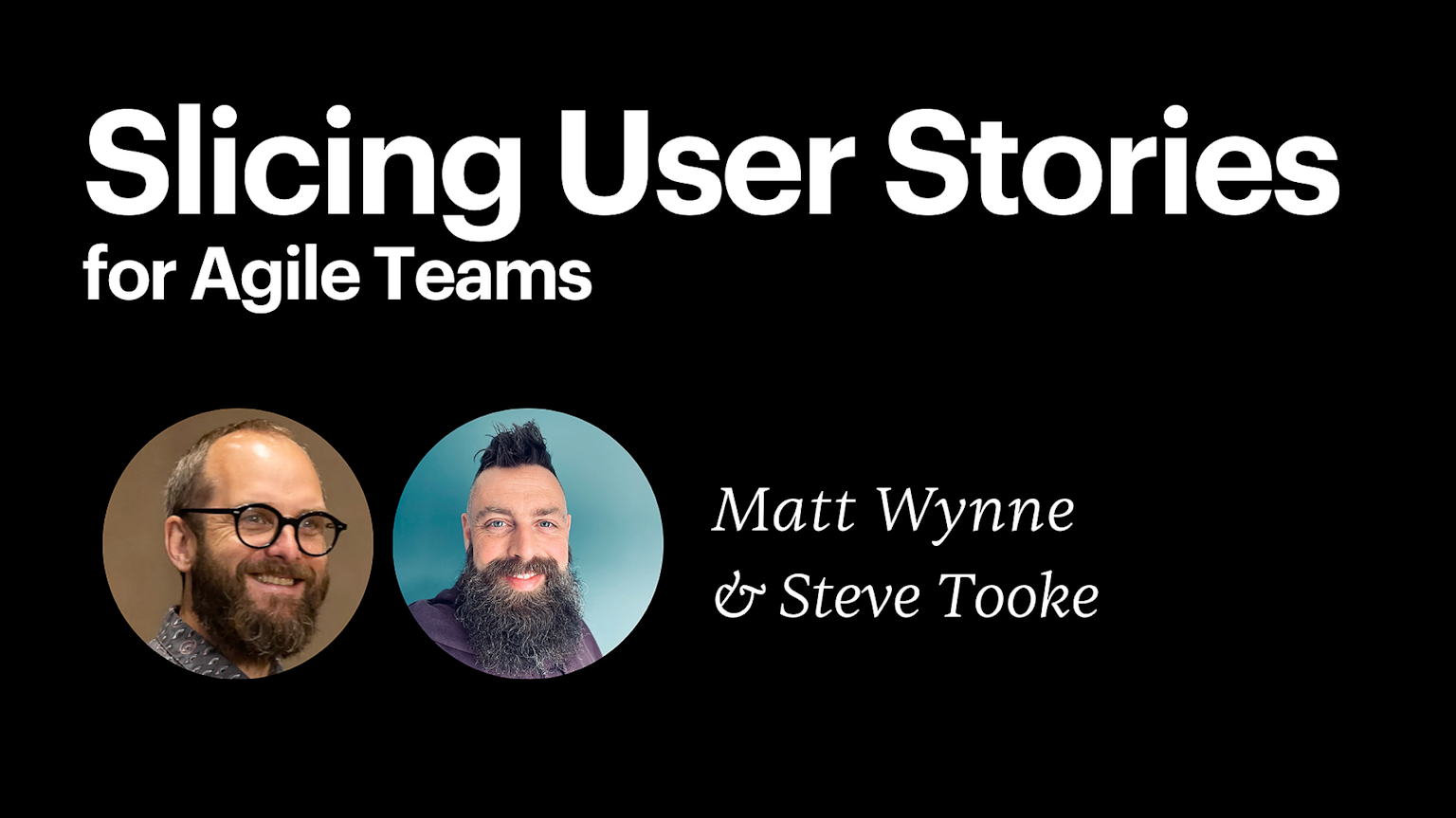Slicing User Stories for Agile Teams
2 Weeks
·Cohort-based Course
Break down any User Story into small, manageable, slices that will flow smoothly through your team into production.
Slicing User Stories for Agile Teams
2 Weeks
·Cohort-based Course
Break down any User Story into small, manageable, slices that will flow smoothly through your team into production.
Course overview
Tackle gnarly requirements with confidence
The backlog of User Stories is the cornerstone of any agile project, but many stories turn out to be bigger and more complicated than anticipated, causing stress, missed deadlines and disappointed customers.
If you're struggling to get people to collaborate on stories before they go into development, or sick of long boring backlog refinement sessions, we're here to help.
We'll teach you Example Mapping, a simple collaborative technique you can use to consistently grind up any epic user story into smaller stories that can be prioritized and delivered independently.
Who is this course for
01
Agile Product Owners who are struggling with a team that can't seem to deliver on its estimates.
02
Tech Leads on Agile teams who are often given vague, poorly-defined User Stories that are hard to estimate.
03
Scrum Masters and Agile Coaches who yearn to get their team to really collaborate and flow.
What you’ll get out of this course
Powerful collaboration
Move away from the obsession with putting every tiny little detail into Jira tickets and focus on working together to break down stories with big unknowns.
You'll be ready to make changes to improve your team's process right from the firs
Awesome acceptance criteria
You'll learn to distinguish between rules and examples when discussing and documenting the details of a user story.
This will give you the tools to craft clear, unambiguous acceptance criteria.
Apply Example Mapping
Learn this collaborative technique for grinding down any user story into smaller pieces and building shared understanding.
Our hands-on session will give you the confidence to start trying this amazing collaborative technique with your teams.
Prioritize the most valuable work
Example mapping gives you the power to see the most valuable core of any user story, and identify the luxury features that can be done later or never at all.
You'll create example maps for real-world user stories and practice making product design trade-offs to cut scope.
Meet your instructors
Matt Wynne
Matt Wynne
Co-facilitator
In the summer of 2008 when I first walked into the tiny apartment over Spitalfields market in London where Songkick was located, I was brimming with excitement.
My previous team at the BBC had often struggled with user stories: some of them turned out to be so big, they were more like small projects. We would thrash, sometimes for weeks, going back and forth between testing and development to finally get them done. The product's release kept slipping back, eroding the trust of our stakeholders.
This time, I was determined that things would be different.
The Songkick team had an incredibly collaborative dynamic between product and engineering. We evolved a process of breaking down our work collaboratively, using concrete examples, that allowed us to be laser-focused with our engineering effort.
Our stories became small enough that we consistently built and shipped them to production in 2-3 days, Eventually, this consistency enabled us to do away with estimates entirely, with the entire team focused on one or two business KPIs as feedback.
The incredible agility of this team is documented in Gojko Adzic's book Specification by Example, and that experience was the basis for The Cucumber Book.
But this course isn't just for teams who use Cucumber. Anyone using Scrum or Kanban or SAFe will benefit from the simple, practical methods we'll teach you in this course.
Steve Tooke
Steve Tooke
Co-facilitator
Steve co-wrote The Cucumber Book, and has coached and trained hundreds software developers in BDD and related techniques.
Steve is an incredible engineer and architect, and has spent the last few years in product management, giving him unique insights into the relationship between problem and solution domain stakeholders.
You can read more on his linked-in page.
Be the first to know about upcoming cohorts
Slicing User Stories for Agile Teams
Course syllabus
5 live sessions • 9 lessons • 7 projects
Week 1
Week 2
May
4
Optional: Example Mapping Practice
May
5
Planning for change
More Example Mapping
Course schedule
4 x 90-minute sessions, plus homework
Monday, Wednesday, Friday + following Friday
8am Vancouver / 11am NYC / 3pm London
We'll get the bulk of the learning done over a single week in 3 x 90-minute video calls.
Then, we'll follow up a week later once you've had a chance to try things out.
Learning is better with cohorts
Active hands-on learning
This course builds on live workshops and hands-on projects
Interactive and project-based
You’ll be interacting with other learners through breakout rooms and project teams
Learn with a cohort of peers
Join a community of like-minded people who want to learn and grow alongside you
Be the first to know about upcoming cohorts
